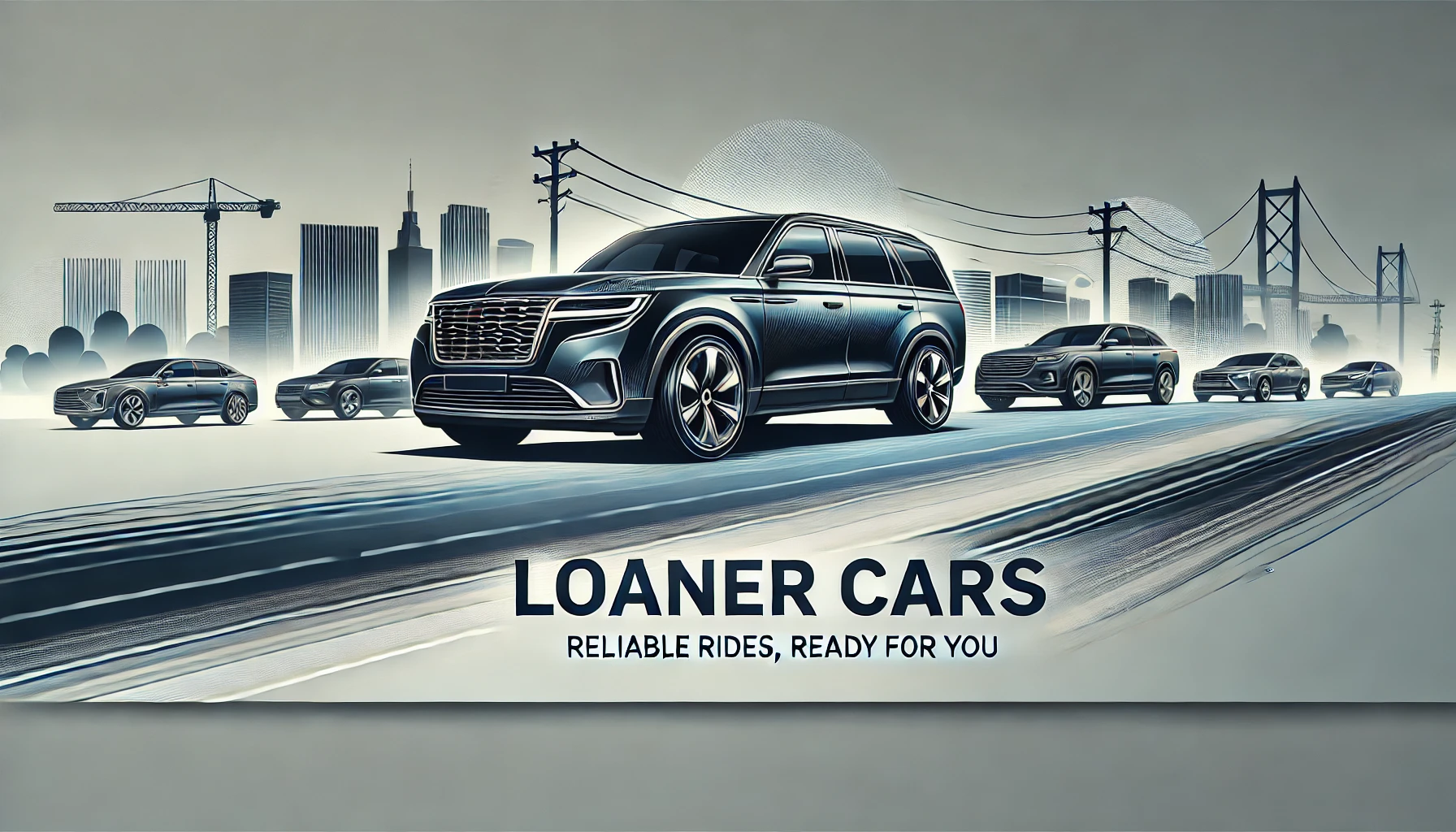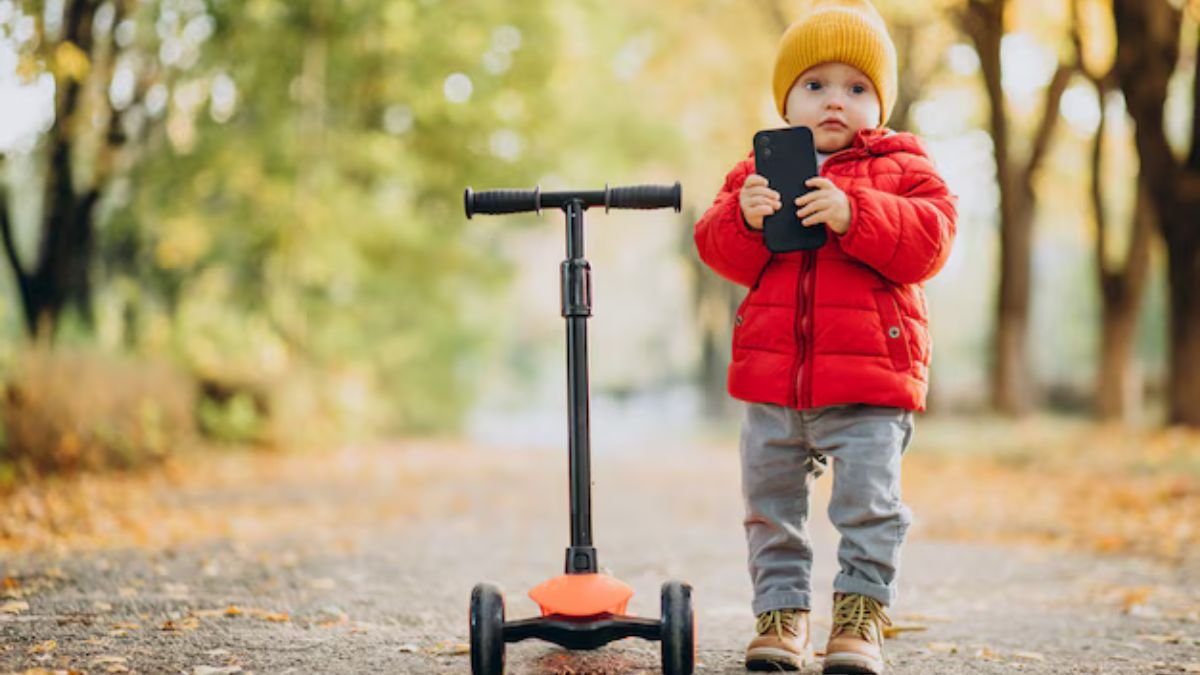Loan
Cash Loans Near Me: Your Ultimate Guide to Finding Quick Cash Solutions

Life doesn’t always go as planned, and sometimes, you find yourself in need of quick cash to handle an emergency expense. Whether it’s an unexpected car repair, a medical bill, or just making sure the rent gets paid on time, you may be searching for cash loans near me. But what are your options, and how do you make sure you’re making the right choice?
In this guide, we’ll explore everything you need to know about finding cash loans near you, including the types of loans available, how to find a reputable lender, and tips for getting the best deal. We’ll make sure you have all the information you need to navigate your way through this process with confidence.
What Are Cash Loans?
Cash loans near me, also known as payday loans, personal loans, or short-term loans, are financial products designed to give you quick access to money. Unlike traditional loans that may take days or weeks to process, cash loans are typically designed to be fast and easy, often with funds available the same day you apply.
These loans can be helpful when you need to cover a small, urgent expense, but they come with their own set of pros and cons, which we’ll discuss in detail below.
Why You Might Need a Cash Loan
There are various situations where a cash loan might be a viable solution:
- Emergency Medical Bills: Sometimes, medical costs arise out of nowhere, and you need to cover them quickly.
- Car Repairs: If your car breaks down, getting it fixed promptly is often essential for getting to work or running errands.
- Rent or Utility Payments: Occasionally, you might need a little extra cash to make sure all your essential bills are covered.
- Unexpected Travel: Whether it’s for work or a family emergency, you might need money to cover last-minute travel costs.
Types of Cash Loans Near Me
When searching for cash loans near me, it’s important to know the different types available. Each has its own benefits and considerations.
Payday Loans
These are short-term loans meant to be paid back on your next payday. They are easy to apply for, but they come with high-interest rates. If you’re not careful, you could end up paying a lot more than you borrowed.
Personal Installment Loans
Unlike payday loans, installment loans let you borrow a larger sum of money and pay it back over several months or even years. They have lower interest rates compared to payday loans and can be a better option if you need more time to repay.
Title Loans
With a title loan, you use your vehicle’s title as collateral. This means you could lose your car if you fail to repay the loan. However, these loans may allow you to borrow more than payday loans and sometimes offer lower rates.
Credit Union Loans
Many credit unions offer small, short-term loans that can be an excellent alternative to payday loans. They often have lower interest rates and more flexible repayment terms. Plus, you get to deal with a community-focused institution rather than a traditional lender.
How to Find Cash Loans Near Me
Now that you know the types of loans available, how do you find the best option near you? Here’s what to do:
Search Online
The internet is your best friend when looking for cash loans. Use search terms like “cash loans near me” or “payday loans near me” to find a list of lenders nearby. Make sure to read reviews and check ratings to find reputable companies.
Check Local Banks and Credit Unions
Traditional banks might not always offer short-term loans, but many credit unions do. Visit your local branch and ask about their loan options. You might find better interest rates and customer service here than with traditional payday lenders.
Visit Lending Storefronts
Some lenders have physical storefronts where you can walk in, talk to a representative, and apply for a loan on the spot. This can be helpful if you prefer a face-to-face interaction or need help understanding the terms.
Mobile Loan Apps
There are plenty of mobile apps available that let you apply for and receive cash loans directly from your phone. Apps like Dave, Brigit, and Earnin let you get small advances on your paycheck, often without the high fees associated with traditional payday loans.
Tips for Choosing the Right Cash Loan Provider
With so many options out there, how do you pick the right one? Here are a few key things to consider:
Check Interest Rates
Interest rates can vary significantly between lenders. Make sure you’re not paying an exorbitant amount for the convenience of a quick loan. Compare rates across multiple lenders to find the best deal.
Read the Fine Print
Always read the loan agreement carefully. Look for hidden fees, prepayment penalties, and other terms that could make the loan more expensive than you initially thought.
Consider Repayment Terms
Some loans require repayment within two weeks, while others let you pay back over several months. Choose a repayment plan that fits your financial situation to avoid unnecessary stress.
Look for Reputable Lenders
Only borrow from reputable companies. Check online reviews, ask for recommendations, and make sure the lender is licensed to operate in your state.
Pros and Cons of Cash Loans
Understanding the benefits and downsides can help you decide if a cash loan is the right choice for you.
Pros
- Quick Access to Cash: Cash loans are designed to get money in your hands fast, often within hours of applying.
- Easy to Qualify For: Most cash loans don’t require a high credit score, which makes them accessible to more people.
- Convenient Application Process: Many lenders allow you to apply online, making the process quick and easy.
Cons
- High-Interest Rates: Cash loans often come with higher interest rates than traditional loans, which can make them costly if not repaid quickly.
- Short Repayment Period: Some loans need to be repaid within a couple of weeks, which might not be feasible for everyone.
- Potential for Debt Cycle: If you rely on payday loans frequently, it can be easy to get caught in a cycle of debt.
Alternatives to Cash Loans
If you’re not sure about taking out a cash loan, consider these alternatives:
Borrow from Family or Friends
This might be an awkward option, but if someone you trust can lend you money, it can save you from paying high-interest rates.
Use a Credit Card
If you have a credit card with available credit, this might be a cheaper option than a payday loan, especially if your card has a lower interest rate.
Apply for a Personal Loan
Personal loans often have lower interest rates and longer repayment terms than payday loans, making them a more affordable option.
Explore Community Assistance Programs
Many community organizations offer financial assistance programs to help with rent, utilities, and other emergency expenses.
Questions to Ask Before Taking a Cash Loan
Before signing any agreement, make sure you’ve answered these important questions:
- What is the total cost of the loan, including all fees and interest?
- How long do I have to repay the loan?
- What happens if I can’t make a payment on time?
- Is there a prepayment penalty if I want to pay off the loan early?
Conclusion
Finding cash loans near me can be a lifesaver in a financial emergency, but it’s essential to understand your options and choose wisely. Whether you’re opting for a payday loan, a personal installment loan, or borrowing from your local credit union, make sure to read the fine print and understand the terms. A little research can save you from unnecessary stress and financial pitfalls.
Remember, cash loans should be used sparingly and responsibly. Consider exploring alternative options before committing to a loan, and always have a repayment plan in place. With the right information and a bit of planning, you can find the best solution for your short-term cash needs.
FAQs
What’s the fastest way to get a cash loan near me?
Applying online or visiting a local storefront can often get you funds the same day. Mobile loan apps are also quick and easy.
Do I need good credit to get a cash loan?
No, many cash loans don’t require a high credit score. However, having good credit can help you secure better rates.
How much can I borrow with a cash loan?
It depends on the type of loan and the lender. Payday loans typically range from $100 to $1,000, while personal loans can offer higher amounts.
Are there alternatives to payday loans?
Yes, consider borrowing from friends or family, using a credit card, or applying for a personal loan from a credit union.
What should I avoid when taking a cash loan?
Avoid high fees, loans with unclear terms, and any lender that pressures you to sign before you’re ready. Always read the fine print!

Loan
Hazard Insurance for SBA Loans: What Small Business Owners Need to Know

If you’re looking to secure a loan from the U.S. Small Business Administration (SBA) to grow or protect your small business, you’ll likely encounter specific requirements, one of which is hazard insurance. Hazard insurance is a critical component of SBA loans, as it provides essential protection for the physical assets that often serve as collateral for the loan. Many business owners are unfamiliar with hazard insurance and unsure about the specific requirements for SBA loans, how to get compliant coverage, and how this type of insurance affects their loan.
This guide covers everything you need to know about hazard insurance for SBA loans, including what it is, why it’s necessary, and how to ensure your policy meets SBA standards.
What Is Hazard Insurance for an SBA Loan?
Hazard insurance for an SBA loan is a type of coverage that protects the physical assets funded by the loan, such as buildings, equipment, or other property, from loss or damage due to specific hazards. The SBA mandates this insurance to secure its collateral in case of damage, providing peace of mind for both the business owner and lender.
Why the SBA Requires Hazard Insurance
The SBA requires hazard insurance to reduce the risk associated with lending. SBA loans are used to fund valuable assets that, if damaged or lost, could place the borrower in a financially compromised position. Requiring hazard insurance protects the SBA’s investment by ensuring there’s coverage for repairs or replacements.
Key Risks Covered by Hazard Insurance
Hazard insurance typically protects against a variety of risks, including:
- Fire and Smoke Damage
- Windstorm or Hail Damage
- Theft or Vandalism
- Water Damage from Plumbing Issues
While hazard insurance generally covers common perils, natural disasters like floods or earthquakes may require additional policies or riders. Be sure to clarify coverage specifics when selecting a policy.
Who Needs Hazard Insurance for an SBA Loan?
Most SBA loan applicants financing physical property, such as real estate, machinery, or high-value equipment, are required to have hazard insurance. This applies to popular SBA loans like the 7(a) loan, 504 loan, and disaster relief loans, particularly when they involve real assets as collateral.
Required Coverage Limits for SBA Loan Hazard Insurance
The SBA generally requires borrowers to have hazard insurance that covers the replacement cost of the financed property, not just its market value. Replacement cost coverage ensures that, if damaged, the property can be rebuilt or replaced without financial strain on the borrower, thereby maintaining the security of the SBA’s collateral.
The Difference Between Hazard Insurance and Property Insurance
While hazard insurance is often part of a larger property insurance policy, it specifically covers physical damage to assets. Property insurance, on the other hand, includes broader protections such as liability, business interruption, and additional riders. For SBA loans, hazard insurance is focused on safeguarding the value of physical assets involved in the loan.
Average Cost of Hazard Insurance for SBA Loans
Hazard insurance costs vary widely based on factors like property value, location, and coverage amount. Business owners in areas with high natural disaster risks, such as hurricanes or earthquakes, may face higher premiums. On average, hazard insurance costs can range from hundreds to several thousand dollars annually, depending on the specific requirements and location of the property.
How to Choose the Right Hazard Insurance for SBA Compliance
When selecting hazard insurance, it’s essential to choose a policy that meets SBA requirements and provides adequate protection for your assets. Ensure that the policy includes replacement cost coverage and covers the specific perils required by the SBA. Consulting with an insurance professional familiar with SBA loan requirements can help simplify the process and avoid non-compliance issues.
Tips for Finding a Trusted Hazard Insurance Provider
When searching for a provider, consider the following tips:
- Look for Experience with SBA Loans: Providers familiar with SBA loan requirements are more likely to understand and meet compliance standards.
- Check Financial Ratings: Choose a company with a strong financial rating to ensure they can cover claims.
- Get Multiple Quotes: Comparing quotes allows you to find a policy with competitive rates and comprehensive coverage.
Using a trusted provider can save time and reduce the risk of policy issues down the road.
Steps to Ensure Your Policy Meets SBA Standards
To ensure your hazard insurance policy meets SBA requirements, follow these steps:
- Review SBA Requirements: Familiarize yourself with the SBA’s specific requirements for hazard insurance coverage.
- Verify Full Replacement Cost Coverage: Make sure your policy covers the total replacement cost of your assets.
- Confirm Coverage for Required Perils: Ensure that your policy includes coverage for the specific risks outlined by the SBA.
Completing these steps before finalizing your policy can prevent complications during the loan approval process.
Consequences of Insufficient Hazard Insurance on SBA Loans
Insufficient hazard insurance can have severe consequences for both the business and the SBA loan agreement. If your policy fails to meet SBA requirements, your loan may not be approved, or it could lead to loan default in the future. Lenders may also impose forced-placed insurance, which is generally more expensive and offers limited coverage.
Additional Insurance Types Often Required by the SBA
Besides hazard insurance, the SBA may require other types of insurance depending on the loan purpose and collateral involved. Common requirements include:
- Flood Insurance: Required for properties in high-risk flood zones.
- Liability Insurance: Covers legal claims from third parties.
- Business Interruption Insurance: Helps cover expenses if business operations are disrupted by a covered hazard.
Reviewing all insurance requirements before loan application ensures comprehensive coverage and compliance.
How Hazard Insurance Affects SBA Loan Approval
Having SBA-compliant hazard insurance can significantly affect loan approval. Before finalizing your loan, lenders will verify your policy’s coverage to ensure it meets all requirements. By securing adequate hazard insurance beforehand, you can prevent approval delays and reduce the risk of non-compliance complications.
What to Do if Your Hazard Insurance Policy Lapses
If your hazard insurance policy lapses, you risk violating your SBA loan agreement. To avoid forced-placed insurance or other penalties, renew your policy on time and stay in communication with your lender if there are any changes to your coverage. Regular policy reviews and automated renewal options can help maintain continuous compliance.
Conclusion
Securing hazard insurance is a critical part of obtaining an SBA loan for your small business. It provides essential protection for your business’s physical assets and ensures that both you and the SBA are covered in the event of property damage. By understanding the requirements, choosing a reputable provider, and confirming that your policy meets SBA standards, you can streamline your loan approval process and gain peace of mind. With the right hazard insurance policy, you’ll be able to focus on growing your business without worrying about unexpected property loss.
FAQs
1. Why does the SBA require hazard insurance for loans?
- Hazard insurance protects the physical assets financed by the SBA loan, reducing financial risks for both the SBA and the borrower. It ensures that in the event of property damage, funds will be available to repair or replace assets.
2. Does hazard insurance cover flood damage?
- Standard hazard insurance generally does not cover flood damage. If your business property is located in a high-risk flood zone, the SBA may require separate flood insurance to comply with the loan terms.
3. What is the difference between hazard insurance and property insurance?
- Hazard insurance specifically covers damage to physical assets from certain perils (e.g., fire, wind), while property insurance is more comprehensive and may include additional protections like liability and business interruption.
4. Can I include hazard insurance costs in my SBA loan?
- In some cases, SBA loans allow borrowers to include the cost of required insurance, like hazard insurance, in their loan amount. Check with your lender to see if this option applies to your loan.
5. What happens if my hazard insurance policy lapses?
- If your hazard insurance policy lapses, you may face penalties, forced-placed insurance from the lender, or even risk defaulting on your SBA loan agreement. It’s crucial to maintain continuous coverage to stay compliant.
Loan
Understanding SBA Loan Hazard Insurance: Everything Small Business Owners Need to Know
When securing a loan from the U.S. Small Business Administration (SBA), especially for physical property or equipment, the requirement for hazard insurance often comes up. Hazard insurance is critical for protecting assets and, ultimately, for getting approved for SBA financing. Many small business owners are unclear about the purpose and requirements of SBA loan hazard insurance, as well as how to secure the right policy.
This comprehensive guide covers everything you need to know about SBA loan hazard insurance, from what it is and why it’s essential to how to choose a policy that complies with SBA guidelines.
What Is SBA Loan Hazard Insurance?
SBA loan hazard insurance is a type of coverage that protects the physical assets financed by an SBA loan, such as buildings, equipment, and other property, from damage or loss due to specific perils. It is often a prerequisite for securing a loan and is required to ensure the SBA’s investment is safeguarded.
Why SBA Requires Hazard Insurance for Loans
The SBA mandates hazard insurance to mitigate risks associated with their loans. For the SBA, lending money for assets without protection would be financially risky. This insurance requirement ensures that if a borrower’s property is damaged, there’s a means to repair or replace it, minimizing the financial impact on both the borrower and the lender.
Types of Risks Covered Under Hazard Insurance
Standard hazard insurance policies typically cover a range of risks, including:
- Fire and Smoke Damage
- Theft and Vandalism
- Windstorm or Hail Damage
- Certain Types of Water Damage (e.g., burst pipes)
It’s essential to understand what is covered by your specific policy since some natural disasters, like earthquakes or floods, may require additional riders or separate insurance policies.
Who Needs Hazard Insurance for an SBA Loan?
Any business owner seeking an SBA loan secured by physical assets is generally required to purchase hazard insurance. This requirement applies to most SBA loans, including 7(a) loans, 504 loans, and disaster loans, particularly if these loans fund buildings, equipment, or inventory.
Understanding the Coverage Limits Required by the SBA
The SBA requires coverage that fully protects the financed property’s replacement cost, not just its current market value. This means your policy should cover the cost of rebuilding or replacing your business’s property to prevent any gaps that could result in financial hardship after an incident.
SBA Hazard Insurance vs. Property Insurance: Key Differences
While hazard insurance is a part of property insurance, it specifically covers physical damages due to unexpected events. In contrast, a full property insurance policy may also include liability, business interruption, and other types of coverage. Hazard insurance for an SBA loan focuses exclusively on protecting the SBA’s collateral.
What Hazard Insurance Typically Costs
The cost of hazard insurance varies based on factors like:
- Property Value: Higher-value properties lead to higher premiums.
- Location: Properties in areas prone to natural disasters often cost more to insure.
- Deductibles and Coverage Limits: Higher deductibles usually lower premiums, while higher coverage limits increase costs.
Small businesses can expect hazard insurance premiums to range from hundreds to several thousand dollars annually, depending on their specific situation.
How to Obtain SBA-Compliant Hazard Insurance
When shopping for hazard insurance, start by discussing SBA requirements with an insurance agent familiar with SBA-backed loans. Ensure they understand the replacement cost requirement, and always review the policy thoroughly to confirm it aligns with SBA standards before finalizing.
Tips for Selecting a Hazard Insurance Provider
When choosing an insurance provider, consider these tips:
- Experience with SBA Loans: Some insurers specialize in SBA-compliant policies, which can simplify the process.
- Strong Financial Ratings: Opt for reputable insurers with good financial ratings, which reflect their ability to cover claims.
- Competitive Quotes: Get multiple quotes to find the best combination of coverage and price.
Working with a provider who understands the nuances of SBA loans can save time and ensure you get the right coverage.
Steps to Ensure Your Policy Meets SBA Requirements
To avoid potential issues, take these steps:
- Review the SBA’s Requirements: Ensure you understand the exact terms your lender has set.
- Verify Coverage Levels: Make sure the policy covers the full replacement cost.
- Double-Check Peril Coverage: Confirm that all perils required by the SBA are included.
Meeting these requirements ensures smooth processing of your SBA loan.
Common Mistakes to Avoid When Getting Hazard Insurance
Here are some common pitfalls to avoid:
- Underinsuring Property: Not covering the full replacement cost can create problems in case of a claim.
- Ignoring Exclusions: Check for exclusions that might leave you unprotected from specific risks.
- Not Consulting with SBA Lender: Clarify requirements with your lender to avoid potential issues with compliance.
Being thorough in your policy selection is essential to meeting SBA loan conditions.
How Hazard Insurance Affects SBA Loan Approval
Lack of SBA-compliant hazard insurance can delay or even disqualify your loan application. To avoid this, have an insurance plan ready as part of your SBA loan application package, showing lenders you’re prepared to meet all requirements.
What Happens If Your Policy Lapses or Isn’t Compliant
If your hazard insurance lapses or doesn’t meet SBA standards, you could face penalties or even loan default. The SBA or lender may also purchase forced-placed insurance on your behalf, which is typically more expensive and offers limited coverage. It’s crucial to keep your policy up to date.
Additional Insurance Requirements for SBA Loans
In addition to hazard insurance, other common SBA-required policies may include:
- Flood Insurance: Required if your property is in a high-risk flood zone.
- Liability Insurance: Protects against legal claims or property damage.
- Business Interruption Insurance: Helps cover expenses if your business operations are temporarily halted due to property damage.
Reviewing these requirements ensures you’re fully compliant and adequately protected.
Conclusion
Securing hazard insurance for an SBA loan is essential for both protecting your business’s physical assets and fulfilling loan requirements. Whether you’re purchasing property, machinery, or other high-value items with your SBA loan, having comprehensive hazard insurance is necessary to safeguard your investment. By understanding the requirements, working with knowledgeable insurance providers, and selecting the right coverage, you can simplify the loan approval process and secure your business’s future.
FAQs
1. Why does the SBA require hazard insurance?
- The SBA requires hazard insurance to protect its investment and ensure that business assets funded by the loan are covered against unexpected damages, safeguarding both the borrower and lender.
2. What’s the difference between hazard insurance and property insurance?
- Hazard insurance covers damages to physical assets from specific perils, such as fire or theft, whereas property insurance is broader and may include liability, business interruption, and additional protections.
3. Does SBA hazard insurance cover flood damage?
- Standard hazard insurance typically doesn’t cover flood damage, so if your property is in a flood-prone area, the SBA may require a separate flood insurance policy.
4. What happens if I don’t maintain my hazard insurance?
- Lapsing on hazard insurance can lead to forced-placed insurance by the lender, which is usually more costly. It may also violate your loan agreement, putting you at risk of loan default.
5. Can I include hazard insurance costs in my SBA loan?
- Yes, some SBA loans allow borrowers to finance insurance costs as part of the loan, which can ease the initial financial burden of setting up the required coverage.
Loan
The Ultimate Guide to Loaner Cars: Everything You Need to Know

Ever had your car break down, only to realize it’s going to be in the shop for days or even weeks? Getting around without a vehicle can be a nightmare, especially when you’ve got a busy schedule. This is where loaner cars come in handy! But what exactly is a loaner car, and how does it work?
In this guide, we’ll cover everything you need to know about loaner cars, including what they are, how to get one, and tips for making the most of your temporary ride. We’ll also answer some common questions and give you a few things to consider before accepting a loaner. Let’s dive in!
What Is a Loaner Car?
A loaner car is a temporary vehicle that a dealership or auto repair shop provides to customers while their own car is being serviced. This can be incredibly convenient if your car needs extensive repairs or if there’s a recall issue that will take several days to fix. Essentially, a loaner car ensures you’re not left without a ride while your vehicle is in the shop.
Why Do Dealerships Offer Loaner Cars?
Dealerships and repair shops provide loaner cars for a few reasons:
Customer Convenience: Offering a loaner car keeps customers happy. It’s a small gesture that makes a huge difference.
Building Trust: When dealerships or repair shops offer this service, it shows that they care about their customers’ needs, which helps in building a positive relationship.
Repeat Business: Happy customers are more likely to return for future services, and a loaner car can be a great way to encourage that loyalty.
How to Get a Loaner Car
Not every dealership or auto shop offers loaner cars, so it’s important to ask ahead of time. Here’s a quick step-by-step on how to get one:
Call Ahead: If you’re scheduling a service appointment, ask if they offer loaner cars. It’s always best to confirm in advance because the availability might be limited.
Check for Eligibility: Some dealerships only offer loaners for specific types of services or warranty repairs. Make sure you qualify.
Reserve the Loaner Car: Loaner cars are often limited, so it’s wise to book one when you set up your service appointment.
Bring Necessary Documents: When you go to pick up the loaner, you’ll likely need your driver’s license, proof of insurance, and maybe a credit card for any potential charges.
Difference Between Loaner Cars and Rental Cars
Although they might seem similar, loaner cars and rental cars are not the same thing. Here are the key differences:
Cost: Loaner cars are usually free if your car is in for service, whereas rental cars come with a daily fee.
Availability: Loaner cars are offered by specific dealerships and shops, while rental cars can be picked up from various rental agencies.
Duration: Loaners are meant to be temporary and used only while your car is being repaired. Rental cars can be hired for longer periods and are generally available for any purpose.
When Can You Get a Loaner Car?
Not all repair situations qualify for a loaner car. Here are some scenarios where you might get one:
Warranty Repairs: If your car is still under warranty and needs repairs, many dealerships will provide a loaner for free.
Recalls: For safety recalls, manufacturers often cover the cost of a loaner car.
Extended Repairs: If the repair is going to take several days, some shops might offer a loaner to make sure you’re not inconvenienced.
Tips for Using a Loaner Car
Read the Agreement: Make sure you understand any limitations on mileage or where you can drive the car.
Check the Condition: Before driving off, inspect the car for any pre-existing damage. It’s better to note these issues to avoid being blamed later.
Return It on Time: Be respectful and return the loaner when your car is ready. Someone else might be waiting for it.
Do You Need Insurance for a Loaner Car?
In most cases, yes. Dealerships often require you to have your own auto insurance before they hand over the keys. Your existing policy usually covers the loaner car, but it’s a good idea to check with your insurer to confirm.
Some dealerships may also offer temporary coverage options, but be prepared to show proof of insurance when picking up the loaner. If you don’t have comprehensive coverage, you might want to consider getting extra protection, just in case.
What to Do If You Get a Ticket or Have an Accident in a Loaner Car
Nobody plans to have a mishap, but it’s best to know what to do if something happens:
Traffic Violations: You’re responsible for any tickets or fines while driving a loaner car. Make sure to pay them promptly.
Accidents: Contact the dealership or repair shop immediately. They’ll guide you on the next steps and how to deal with insurance claims.
Loaner Car Etiquette: Dos and Don’ts
Do’s
Return with a Full Tank: If the loaner was given to you with a full tank, bring it back the same way. It’s good practice and shows respect.
Keep It Clean: Don’t treat the loaner car like a junkyard. Clean up any trash or mess before returning it.
Respect the Mileage Limits: Some shops may set a cap on how many miles you can drive. Stick to it!
Don’ts
Avoid Unnecessary Trips: Remember, the loaner cars is meant for convenience, not for a weekend road trip. Use it sparingly.
No Smoking: Many dealerships have a no-smoking policy for loaner cars, so respect it to avoid extra charges.
Don’t Ignore Small Issues: If you notice a problem with the loaner, report it to the shop immediately.
What Are the Benefits of Using a Loaner Car?
Convenience: You can continue your daily routine without disruption.
Cost-Effective: Most loaners are free, which saves you from paying for a rental.
Peace of Mind: You don’t have to worry about finding alternative transportation.
Common Myths About Loaner Cars
Myth 1: Loaner Cars Are Always New
Not necessarily. While some loaner cars are newer models, others might be older vehicles that the dealership maintains in good condition.
Myth 2: You Can Drive It as Much as You Want
There are usually mileage limits, so it’s best to clarify with the dealership.
Myth 3: Loaner Cars Are Always Free
Loaner cars are typically free for warranty repairs, but for other services, there might be a fee or specific conditions to meet.
New Insights: Making the Most Out of a Loaner Car Experience
Most of the competitor content simply explains what loaner cars are, but here’s something extra for you:
Negotiate When Booking Service: If you’re not automatically offered a loaner, ask! Sometimes, dealerships can be flexible.
Compare Insurance Options: Some credit cards might offer insurance for rental vehicles, which can cover loaners too. Check the terms before assuming you’re covered.
Conclusion
Loaner cars are a lifesaver when your own vehicle is out of commission. Knowing how to get one, the rules that come with it, and the benefits it offers can make the experience hassle-free. Always check the agreement, respect the dealership’s terms, and return the loaner in good condition. It’s a win-win!
FAQs
How long can I keep a loaner car?
Typically, you can keep it for the duration of your car’s repair. Some shops may have a limit, so ask upfront.
Do I need to pay for a loaner car?
Loaner cars are often free for warranty and recall repairs, but it can vary for other services.
Can I pick the type of loaner car I get?
Generally, no. The dealership will provide whatever’s available.
Will my insurance cover a loaner car?
Most standard policies cover loaner cars, but always double-check with your provider.
What should I do if the loaner car breaks down?
Contact the dealership immediately. They’ll usually arrange for a replacement or tow service.
-

 Blog2 months ago
Blog2 months agoThe Ultimate Guide to List Crawlers: What They Are and How They Work
-

 Business4 weeks ago
Business4 weeks agoUnlocking Income Potential: A Deep Dive into Money6x.com Earnings
-

 Technology1 month ago
Technology1 month agoZhuoxin Data Technology: A Deep Dive into Its Cutting-Edge Solutions
-

 Game1 month ago
Game1 month agoUnlock Your Fun: A Deep Dive into Retro Bowl Unblocked Games 66
-

 Fashion1 month ago
Fashion1 month agoExploring the Key Features of Get Hire Technologies Inc: What Sets Them Apart?
-

 News2 months ago
News2 months agoExploring the Legacy of Bad Company: The Band That Defined Classic Rock
-

 Insurance1 month ago
Insurance1 month agoUnderstanding Grocery Store Insurance: Essential Coverage for Your Business
-

 Lifestyle2 months ago
Lifestyle2 months agoNavigating the Geox Baby Fighter 2 Manual: Tips for New Parents